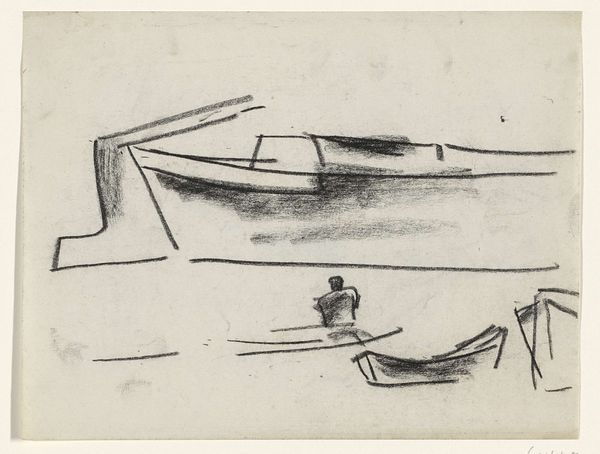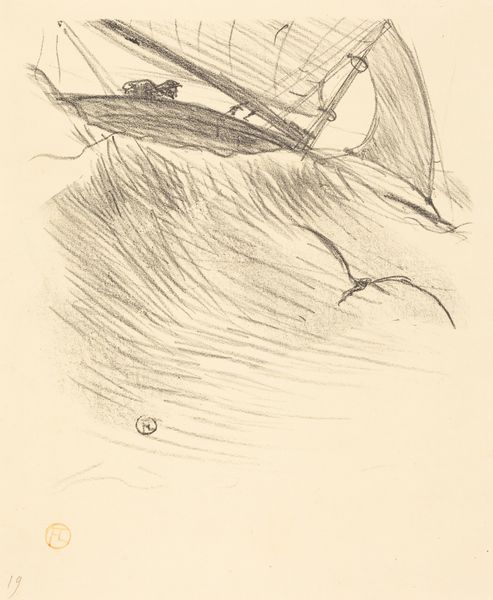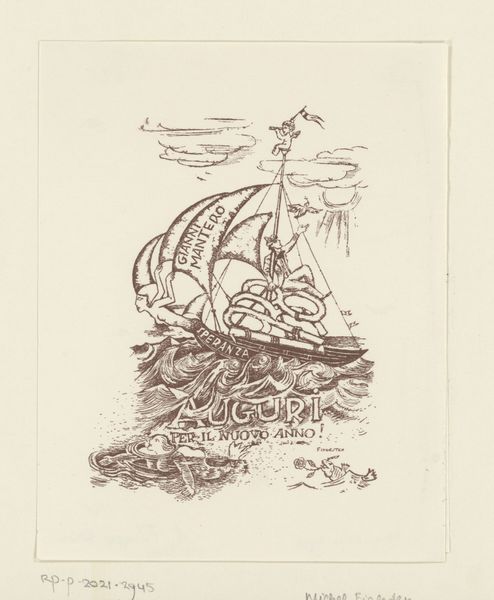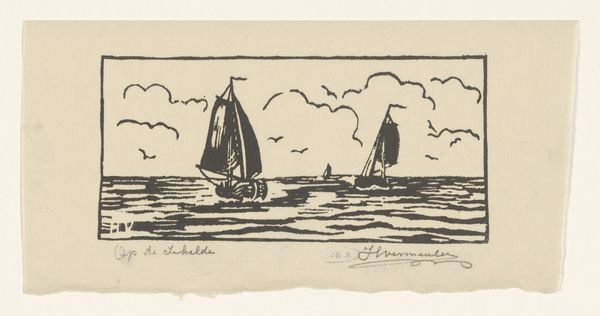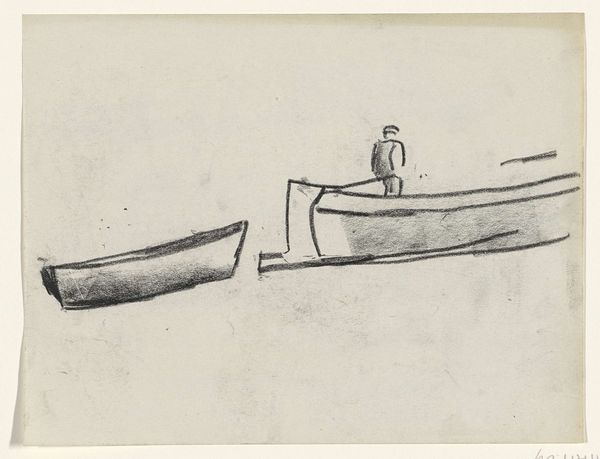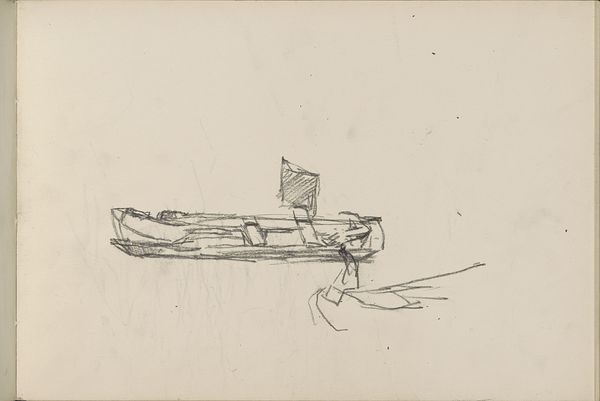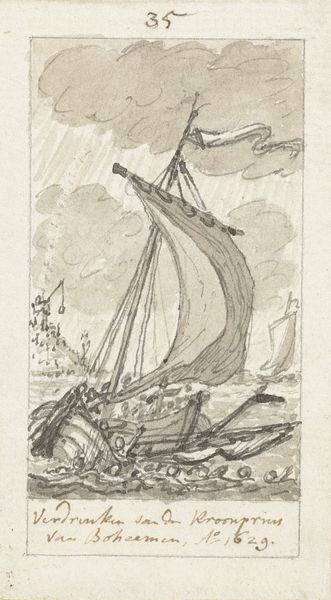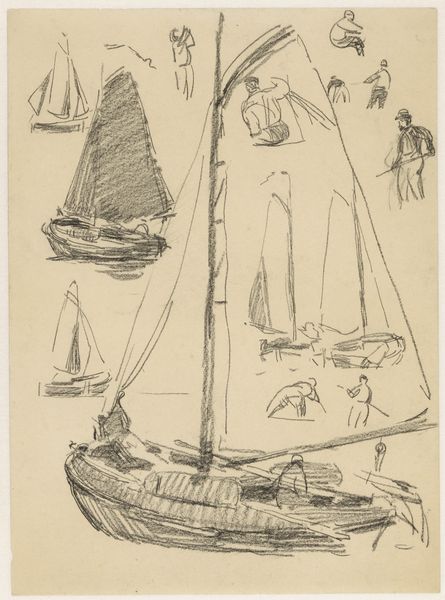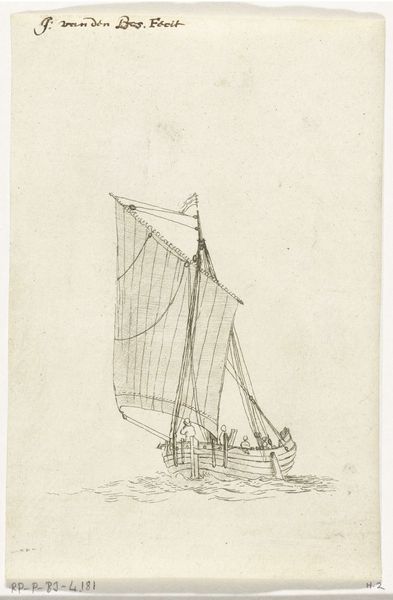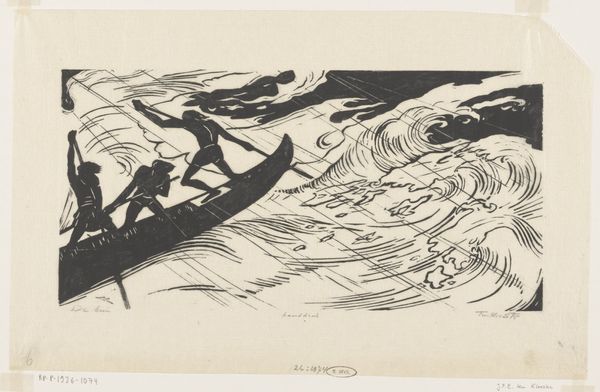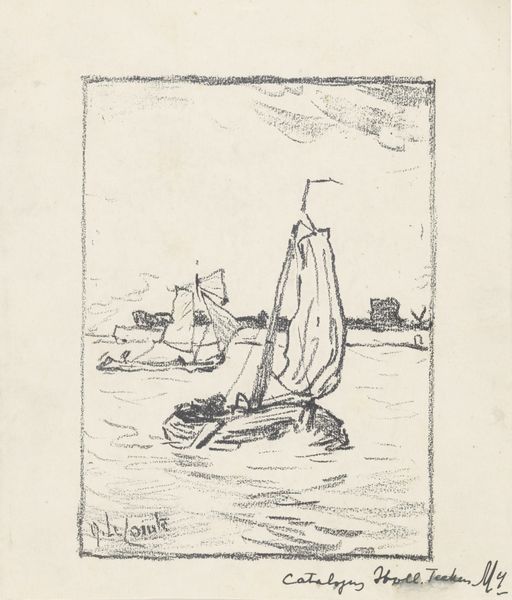
Dimensions: height 326 mm, width 249 mm
Copyright: Rijks Museum: Open Domain
Editor: This is "Three Men on a Boat" by F. Ockerse, created sometime before 1934. It’s rendered with what appears to be ink on paper. The stark black and white evokes a sense of colonial-era documentary illustration, perhaps related to river work. What strikes you most about this drawing? Curator: What stands out to me is how the work invites us to consider the processes and materials embedded within its representation. We see the swift, confident strokes of ink bringing the scene to life, almost like a record of action. The materiality of the paper, and the ink's interaction with it, suggest both a directness and a level of artistry in production. What implications arise for you from the contrast of subject, being seemingly related to work, and medium, which points to art? Editor: That’s interesting, I hadn’t thought about that interplay. I was focused on the image, interpreting its meaning – the figures and the setting, etc. But you're right, the means of production do seem crucial here, perhaps undermining any potential heroism by drawing attention to the actual labour of artistic representation. Is it fair to ask whether we can apply our views to past eras? Curator: Absolutely. How are these figures represented through a clearly economic system that produces both raw materials and opportunity for labour? Moreover, where was the paper sourced? How was the ink developed and sold? I consider these crucial elements of interpreting this work. These considerations open up broader socio-economic implications of the era's production and consumption, which artists like Ockerse directly benefited from, like it or not. Editor: So, viewing this piece, through its materiality and production, allows us to consider the economic and perhaps exploitative context that allowed for its creation in the first place. It seems less like a picture and more like a physical object embedded within a system. Curator: Precisely. It invites us to critically examine the conditions that birthed it.
Comments
No comments
Be the first to comment and join the conversation on the ultimate creative platform.
